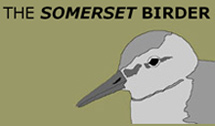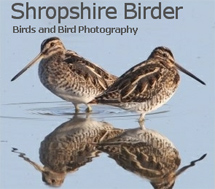Weekly round-up: 29 Jan - 04 Feb 2014
As the wettest January since records began gave way to a new month, the dismal weather showed no signs of abating. The meteorologists tell us this is because of an extremely strong jet stream bringing in a succession of low systems off the Atlantic; and meanwhile Shetland has enjoyed (if that’s the word) a month of solid south-easterly gales . If only this was October, we’d all have been laughing...
As it is, it’s now February, the Somerset Levels are still busily reverting to the marsh they were before mankind started tinkering with them, and the coming month is set to be more of the same as far as the weather goes. In other words, more rain, and more wind. It’s like Groundhog Day out there.
Still, whatever the weather throws at us, the quality birds keep on coming (or shaking themselves down, having a bit of a sodden preen, and hanging on in there). While it may be dull outside, the birding’s anything but with lingering birds of quality joined by some new and wholly unexpected faces – some of which were more lively than others. At times this week it felt like it had gone a bit 2013 all over again...
BOU/IRBC Status: A
RBA status: Extremely rare
Accepted British records: 3
Accepted Irish records: 0
Previous Records:
24 Jan 2011 - Hornden, Devon
30 Apr 2008 - Southill Park, Beds
07 Nov 1958 - St Mary's, Isles of Scilly
And to think that in my first draft of this week’s Rarity Round-Up I’d wistfully hoped to complete the rare American waterbird quartet this week with a British or Irish record of an American Purple Gallinule... A dead one on January 30th in Iceland at Núpsvötn/Fljótshverfi had given me slim cause for hope. But, to be honest, it felt rather speculative. That was Sunday evening. Twenty four hours later and it was re-write time, as news broke during Monday afternoon that one had been picked up, dead, at Carne golf course on the Mullet (Co.Mayo). Ireland’s first record, and once again with this species, so near and yet so far...
In recent years American Purple Gallinule has flirted with all latter-day listers. After the first record, the bird famously picked up stumbling down the High Street in Hugh Town on St Mary’s (Scilly) in November 1958, a repeat seemed like a distant pipedream. Then in the past few years, some hope. A bird in Bedfordshire in 2008 and another in Devon in 2011, the only fly in the ointment being that both were dead by the time they were found. They say lightning doesn’t strike twice, but with events in Ireland this week, it seems where gallinules are concerned it’s prepared to strike repeatedly, and cruelly. A live one, even (whisper it) a moribund one with enough vital spark left to avoid being taken into care, would surely provoke one of the biggest twitches we’ve yet to see.
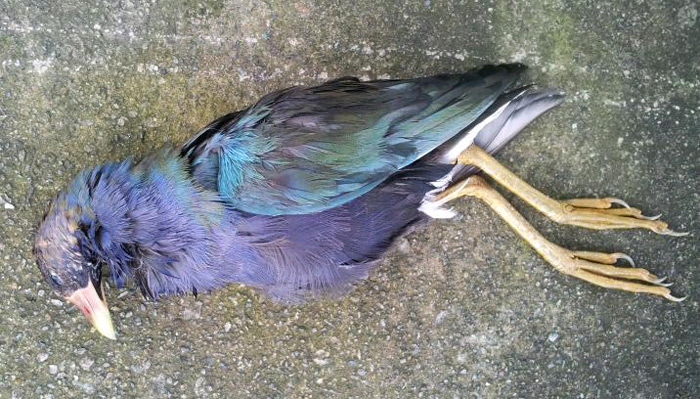
Topping the bill of not-dead birds this week is the Sora pushed out into the open by rising water levels on Lower Moors, St Mary’s (Scilly) on 2nd February, and still showing there on 3rd. Midwinter birds aren’t without precedent (as the individuals in Nottinghamshire in 2004 and Devon in 2000 stand witness) and the suspicion must be that these birds represent prior autumn arrivals; and of course a Sora was seen briefly on Lower Moors in October 2013. This is presumably that bird, happily wintering in the mild Scilly microclimate.
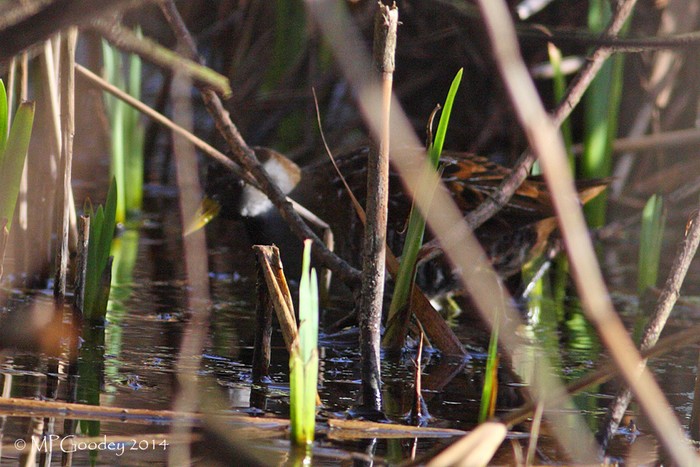
Despite the two recent records last autumn Sora remains a numerically rare beast, with the south-west of England dominating the past 17 accepted records – and Scilly being particularly dominant, accounting for around a third of all British and Irish Soras. They tend to stick around, so there probably aren’t too many gaps on birders’ lists out there; but any rail that’s managed to cross the Atlantic deserves all the attention it gets.
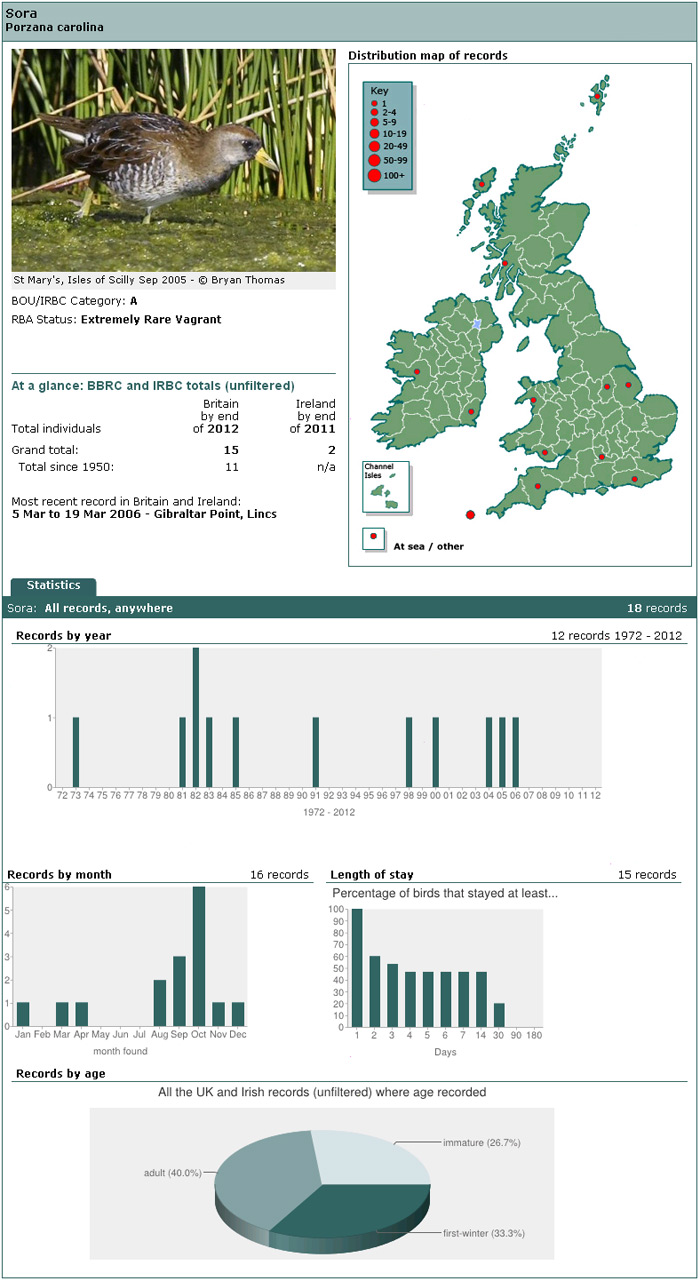
Hot on the heels of Ireland’s 18th Ivory Gull, the obliging bird that lingered at Tacumshin (Co.Wexford) earlier in January, came another record in this fabulous winter for the species, this time from Cromane (Co.Kerry). With the only previous record for Kerry dating back to 1847, to say this was long-awaited would be something of an understatement... Found on January 30th, it remained all-too-briefly until 31st, but was not reported subsequently.


Playing a definite second fiddle in the good looks stakes to the Co.Kerry Ivory Gull was a first-winter American Herring Gull found at Cobh (Co.Cork) on February 2nd. It’s hardly a fair comparison really, judging the subtle merits of a large brown larid against the crowd-pleasing wow factor of a High Arctic wanderer. Aesthetics aside, Ireland dominates British and Irish records of this transatlantic vagrant averaging a handful of records every calendar year, and 90 accepted records in all by the end of 2011. One that’s to be more expected than its rarer kin from the north, but nonetheless a quality find.
In a week where Ireland seemed to dominate the headlines, the first Irish Pacific Diverweighed in with a stay on Lough Fea (Co.Tyrone) that continued until February 2nd at least, where it continued to show well. Those of us that haven’t caught up with one of these beautiful divers could only drool at the images of this bird that filtered out – to admire from afar, or look to make some travel arrangements...

Back across the water, in Scotland the Highland American Coot remained a nailed-on fixture during the week, while the Pied-billed Grebe at Balranald RSPB reserve, North Uist (Outer Hebrides) continued to be reported sporadically until February 1st at least. With Sora this week adding to 2014’s tally of North American waterbirds, there’s only one needed now to properly complete the set. (Enough of that daydreaming, move on...)
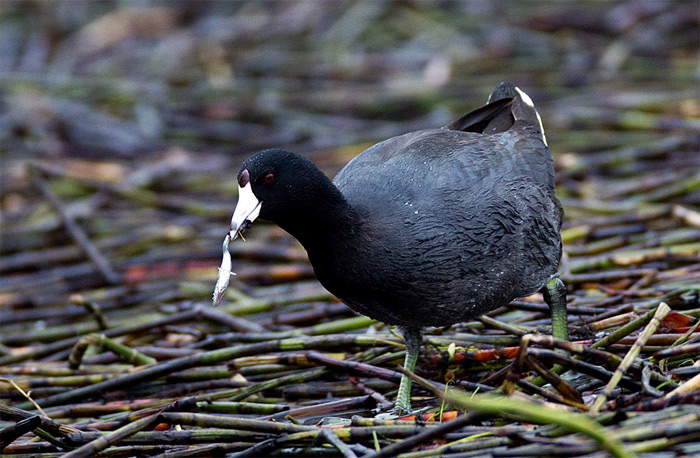
Would a Red-flanked Bluetail usually make the headlines these days? Once upon a time, some twenty years ago in our pre-Winspit innocence, it most certainly would have done at any time of year. But now? I am guessing probably not – but this is the first week of February, and while we might reasonably expect a Bluetail or two in October, one that’s apparently over-wintering is a different kettle of fish altogether. One was found at Marshfield (Gloucestershire) on 3rd (and still present on 4th), an unprecedented midwinter record, and a first for the county too. A big hand then for the plucky Tarsiger; and for the presumably gobsmacked birder who stumbled across it.
John Bennett has kindly written a short piece about his fantastic winter find which you can read here
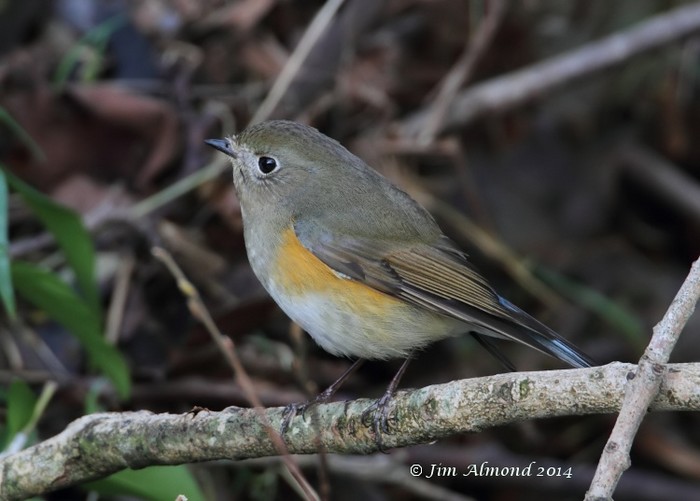
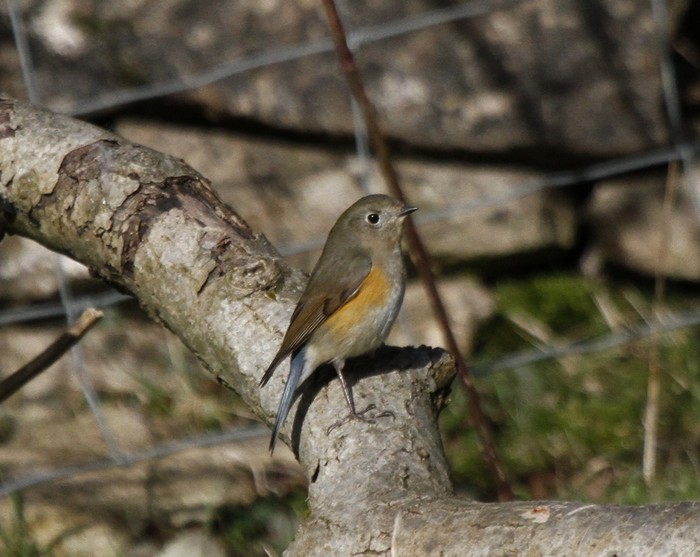
A fairly average midwinter showing this week on the seabird front, with a modest tally of shearwaters starting things off: St Ives (Cornwall) accounted for two records of Balearic Shearwaters logged on January 30th and February 2nd, while a further two records came from Filey (North Yorkshire) and Flamborough (East Yorkshire) on 3rd. Brixham in Devon continued to host a White-billed Diver with a bird present there on 2nd-3rd; up in Scotland, one lingered close inshore off Rosehearty (Aberdeenshire) from January 30th – February 1st, and a further bird was seen off Burghead (Moray/Nairn) on 2nd.

Other than that, it was all about the Little Auks with some 80 birds recorded across the week. Most involved singletons with the expected Scottish bias to the records – outwith Scotland three birds were recorded from Snab Point (Northumberland) on January 29th and single birds off St Mary’s (Scilly) on 30th, and Bantry (Co.Cork) on February 1st. Further records of three birds came from Tarbat Ness (Highland) on 29th, Burghead, Nairn (Moray/Nairn), and Wick (Highland) on 31st, and Findhorn (Moray/Nairn) on 1st. Pick of the bunch though was a flock of 35 birds that landed on the sea off Tentsmuir (Fife) on 3rd.
As ever, keeping tabs on our wintering Glossy Ibis contingent proved challenging with a cluster of records from Suffolk representing either several or one locally wandering bird. Erring on the side of caution with that one, 18 birds were recorded during the week spread around Britain and Ireland, a tally consistent with that of the previous week, and involving a fair number of settled birds.
Up on Orkney, a single bird was still on Westray (Orkney) to 3rd while elsewhere in Scotland a single bird was still being recorded at Balranald, North Uist (Outer Hebrides) until 2nd. The north of England lay claim to further singles remaining at Pennington Green (Manchester) until 31st, Upper Thurnham (Lancs) until 1st, and Saltholme (Cleveland) until 4th.
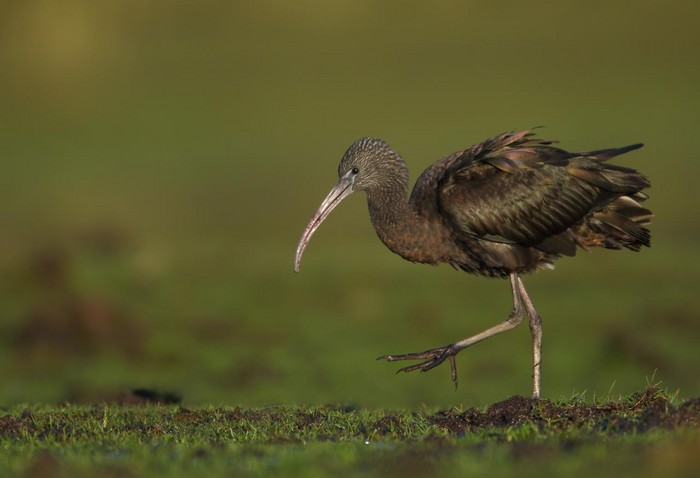
The roosting bird at Chasewater (Staffordshire) continued to conjure memories of the Kentish Lampen Wall vigils until 2nd , while the settled bird remained at Brownhills (West Midlands) to 2nd also. A single bird was recorded at Fen Drayton (Cambridgeshire) on 2nd.
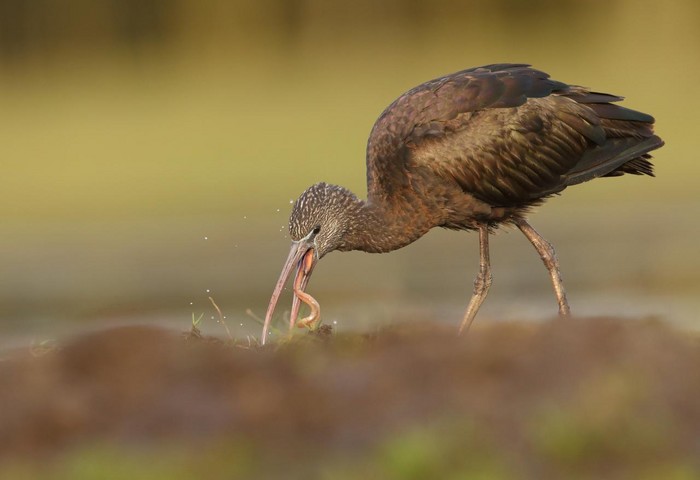
Three birds continued to be reported from Norfolk this week, with two remaining at Martham Broad and one roaming the Glaven Valley between Cley and Wiveton until week’s end. In Suffolk last week’s individual continued to be reported from Oulton Broad until 4th; from elsewhere in Suffolk reports included Worlingham on 30th and Lowestoft on 31st – the same or another bird?
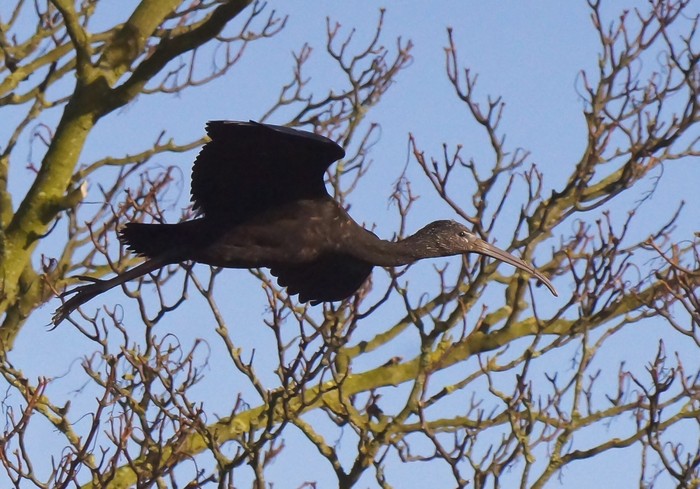
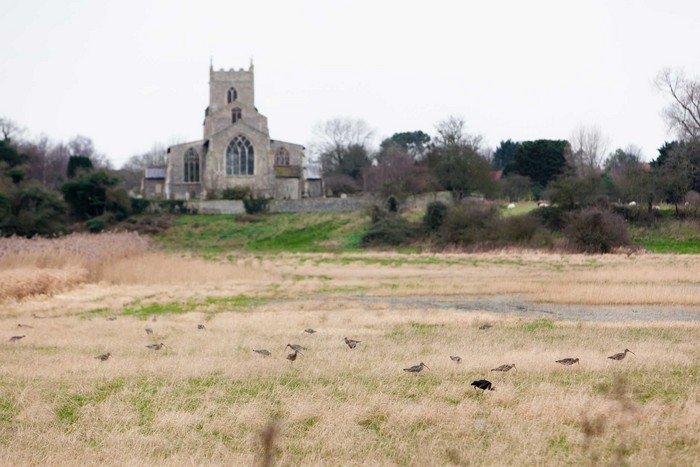
Further south in Kent, a single bird was logged again at Dungeness on 1st-3rd; and the south-west’s sole representative was a single bird reported from Honiton (Devon) on 30th.
Irish records of Glossy Ibis remained a shadow of their former selves in recent times, with just four birds noted: at Cahore (Co.Wexford) still on 29th; at South Slob (Co.Wexford) until 3rd, at Ballycarry (Co.Antrim) until 4th, and and at Derrymacash (Co.Armagh) on 2nd- 4th.
Around 25 Great White Egrets were reported from 13 counties this week, a modest reduction on last week. With the Somerset Levels rather disrupted (and no records forthcoming from the county) it was Dungeness (Kent) that fared best, with four birds there on February 1st. Duos were recorded at two sites in Wales, at Llangorse Lake (Powys) and Llanrhidian Marsh (Glamorgan) on 2nd; other than that though, it was a case of single birds at two sites in Cheshire, Lancashire, and Wiltshire respectively, and at single sites in other counties besides. The furthest north of those records came from Loch Kinord (Aberdeenshire) on January 30th.
Reports of Cattle Egrets picked up somewhat this week, albeit involving birds that had been recorded previously in recent times. The bird at Steeple Claydon (Buckinghamshire) remained there to 31st, whilst in Ireland birds were recorded again at Bunmahon (Co.Waterford) on 29th, and at Hillsborough Park (Co.Down) on February 1st.
News filtered out this week of a Squacco Heron frequenting a private garden at Hythe in Kent. As the first images began to appear online some uncertainty arose in the ether about whether it was indeed this species or whether there were features indicative of Indian Pond Heron. That some Ardeola herons are kept in captivity across Europe is a given; whether or not an Indian Pond Heron could naturally occur midwinter in Britain is more moot. It raises the shade of the Chinese Pond Heron seen in Norfolk and Hampshire back in late 2004; or indeed the Yellow Bittern said to have been picked up dead in Dorset in November 1962. Rightly or wrongly, both of those records attracted subsequent taints of controversy – it’ll be interesting to see how the identity and provenance of the bird in Kent plays out in the coming days...
Outside of their Dorset stronghold (where 21 birds were recorded at Arne on February 1st-2nd ) there was a distinct paucity of Spoonbills. In Devon two birds were noted on the Tamar Estuary on 29th, and three birds at Drake’s Island on 1st and 4th, and at Penhill Marsh on February 2nd; the former trio still present on the island on 3rd. Meanwhile in Cornwall the traditional site of Wacker Quay on the River Lynher accounted for three birds on January 30th. Elsewhere in Britain the single bird remained at Cuckmere Haven (East Sussex) until February 2nd, and a single bird was recorded at Vange Marsh (Essex) from 31st until February 1st. Sightings in Ireland involved single birds at Dungarven (Co.Waterford) still on 29th; at Castle Espie (Co.Down) until February 1st; and at Cromane (Co.Kerry until 4th.
Away from their usual haunts in Norfolk, Common Cranes proved thin on the ground, with just two birds near Finavon (Angus) on 29th , and the lingering pair at Cheselbourne (Dorsey) on 3rd to report.
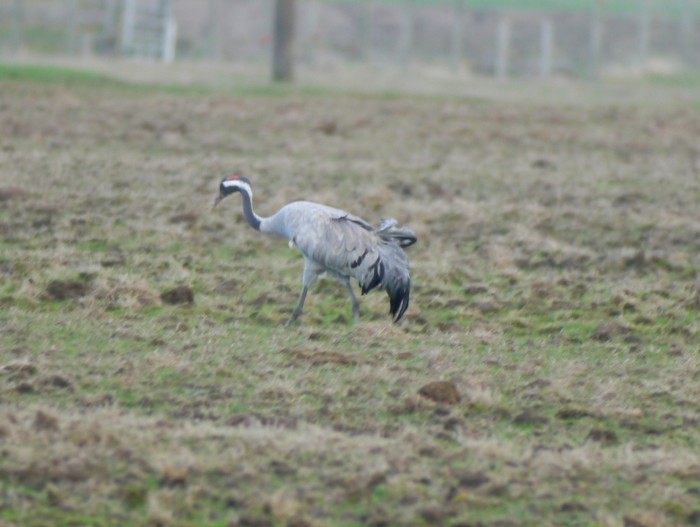
Just five Snow Geese were recorded during the past week, these being the white morph still at Rattray Head (Aberdeenshire); the two wandering blue morphs still near Braehead (Clyde) on 30th; a white morph at Crieff (Perth/Kinross) on 3rd, and a white morph of unknown origin at Vange Wick (Essex) also on 3rd.
Sticking with geese of unknown origin, a Red-breasted Goose was noted at Henfield (West Sussex) on February 2nd.
Up to ten Black Brants featured during the week, with birds popping up all over the shop in Hampshire and West Sussex in particular - two were at Hayling Island on 2nd, while singles were noted at Pagham Harbour on 3oth, Sturt Pond on 31st, and Warblington on February 2nd.
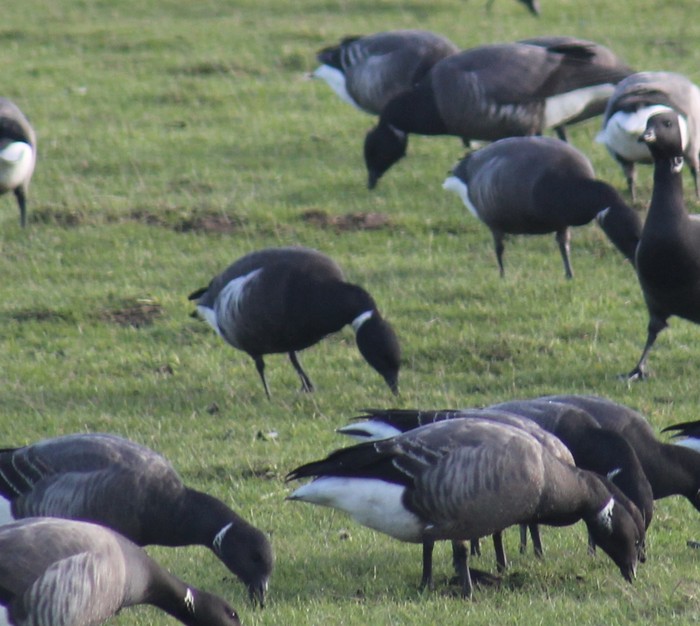
Essex dominated Black Brant records from the east with three birds (two adults and a juvenile) noted at Holiwell Point on 3rd. An adult continued to be reported from the Cley area until February 2nd, whilst in the north of England single birds remained at Spurn (East Yorkshire) until 29th, and Roa Island (Cumbria) until 30th at least. Meanwhile in Ireland, a bird was noted at Kilshannig (Co.Kerry)on 3oth.
In County Mayo, the drake Black Duck was still on the Mullet, at Termoncarragh Lough on 30th, continuing to share its chosen patch of water with a drake Green-winged Teal.
A further ten drake Green-winged Teals were recorded in the course of the week: the most southerly representative being the bird at Sopley (Hampshire), still present until February 3rd at least. Not a million miles away was the bird at Ham Wall (Somerset), also present until 2nd and presumably spoilt for choice for habitat. Moving north, the long-staying bird at Newgale (Pembrokeshire) was still present on 4th; the bird at Druridge Bay NWT (Northumberland) remained until 2nd at least. A further two drakes were recorded on 4th, one apiece at Saltholme RSPB (Cleveland) and Far Pasture NR (Co.Durham).
In Scotland, drakes remained at Caerlaverock (Dumfries & Galloway) and Loch of Strathbeg (Aberdeenshire) until the week’s end, and a further drake was recorded at Broadwood Flash (Ayrshire) on 30th. In Ireland, the previously mentioned Co.Mayo bird had another drake at Lough Swilly (Co.Donegal) for company.
All the Lesser Scaups this week were wintering birds from previous reviews - single drakes were still on Dozmary Pool (Cornwall) on 2nd, Cormeston Lakes CP (Glamorgan) until 3rd, and at Tittesworth Reservoir (Staffordshire) and on Loch Watten (Highland) until 4th; and the female remained on Loch Bee, South Uist (Outer Hebrides) on January 30th.
Eight Ring-necked Ducks were scattered across the region: females at Loch Scaraidh, North Uist (Outer Hebrides) on February 1st-4th, Dozmary Pool (Cornwall) on 2nd, and Burrator reservoir (Devon) again on 4th; and drakes remaining at Oxford Island (Co.Armagh) and Ballyshunnuck Reservoirs (Co.Waterford) until February 1st, at Meikle Loch (Aberdeenshire) and Wimbleball Lake (Somerset) until 2nd, and at Trabboch Loch (Ayrshire) until 3rd. Just three American Wigeons were logged, drakes still at Lough Neagh (Co.Armagh) on January 31st and at Udale Bay (Highland) on February 1st, with another noted in Wales at Newport wetlands (Gwent) on 3rd-4th.
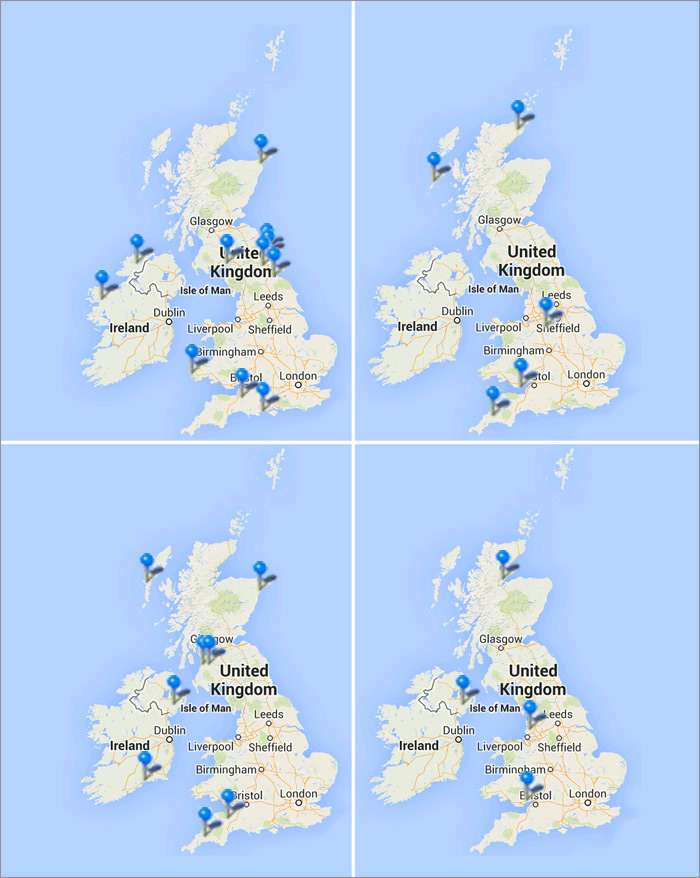
A queen King Eider was still at Fidra (Lothian) on February 2nd ; another queen was still off Blacksod (Co.Mayo) until 4th. Meanwhile back in Scotland a fine drake remained at Burghhead (Moray) on 30th.
Pensarn (Conwy) continued to dominate all news Surf Scoter-related, with numbers fluctuating between days but up to four drakes being recorded on February 2nd. A further drake was recorded at Newcastle (Co.Down) on 2nd, while the first-winter female remained at Peninerine, South Uist (Outer Hebrides) and the juvenile at Brands Bay (Dorset) until 2nd.
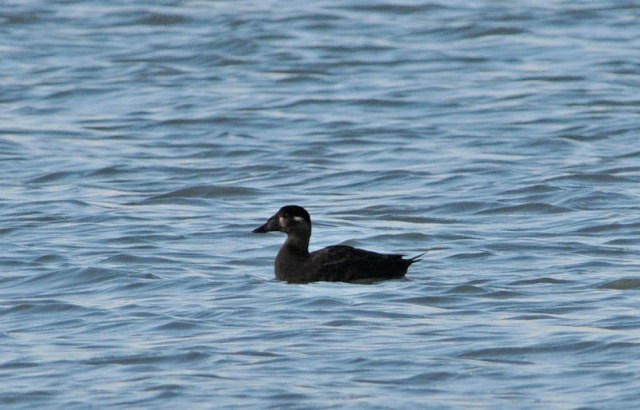
Not a great deal to report here this week, with all the news being of a Hampshire origin: the Lesser Yellowlegs remained a fixture all week at Lepe CP, and the Long-billed Dowitcher reared its snouty head again at Pennington Marshes on 1st and 3rd.
The smart first-winter Laughing Gull remained in the vicinity of the harbour at Ballycotton (Co. Cork) until 2nd at least. Ireland accounted for just over half of the week’s records of Ring-billed Gulls, with nine of the fifteen reported coming from there: an adult still at Carrickfergus (Co.Antrim) on February 1st; an adult at Cruisetown Strand (Co.Louth) on 2nd; an adult remaining at Tramore (Co.Waterford) until 1st; an adult at Nimmo’s Pier (Co.Galway) on January 31st; and adult at O’Callaghan’s Strand (Co.Limerick) on 2nd; an adult at Bray (Co.Wicklow) on January 29th; an adult at Drimnagh (Co.Dublin) on 1st-2nd; and yet another adult still at Tralee (Co.Kerry) on 4th. Co.Cork returned just one bird, seen at Glanmire on 2nd.
Outside of Ireland and the regular birds remained steadfast at Dingwall (Highland) to 2nd, at Walpole Park (Hampshire) until 4th, and at the Llys-y-Fran roost in Pembrokeshire until 2nd. The adult was seen again in Somerset at Chew Valley Lake on 2nd; further north, the adult was seen again at Crosby (Lancashire) on 2nd, while a second-winter bird was at Audenshaw Reservoir (Manchester) from 2nd-3rd.
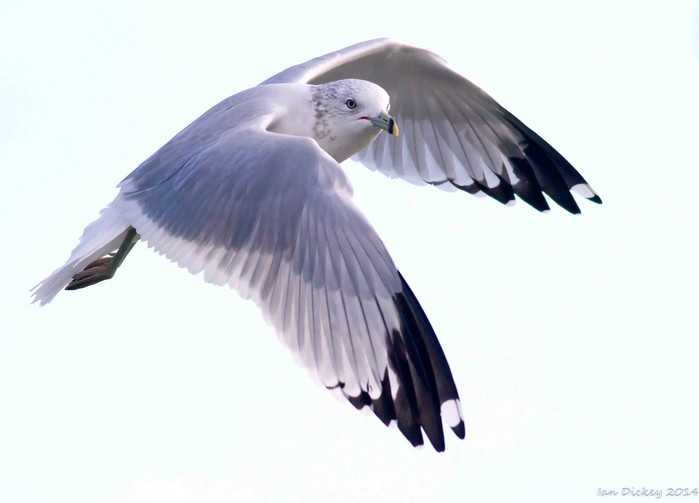
In Devon, the wintering adult Bonaparte’s Gull once again proved a daily fixture around the Dawlish Warren area up until the end of the week.
Glaucous Gulls once more dominated the white-winged gull news, with some sizeable flocks recorded as Scotland and Ireland slugged it out for the laurels of most-favoured this week. From a total of around 130 birds recorded in Britain and Ireland, notable counts were 10 birds at Kildonan, South Uist (Outer Hebrides) on January 29th; eight at Aird an Runair, North Uist (Outer Hebrides) on February 1st; and five birds at Rubha Ardvule, South Uist (Outer Hebrides) on 2nd; whilst in Ireland, eight birds were on the Mullet (Co.Mayo) on January 30th; five at Ballycotton (Co.Cork) on February 1st; and at least 15 birds on the Beara Peninsula (Co.Cork) on 2nd.
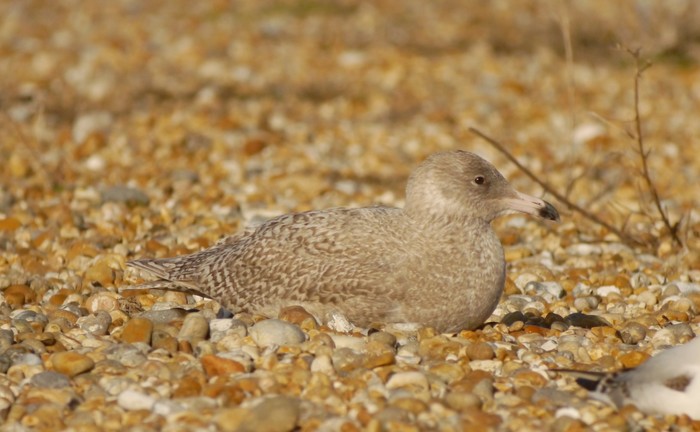
Seen in over 30 counties, records spanned the length and breadth of Britain and Ireland, and once again there were enough inland records to keep the impetus up to go and check your local gull roost as the new week began.
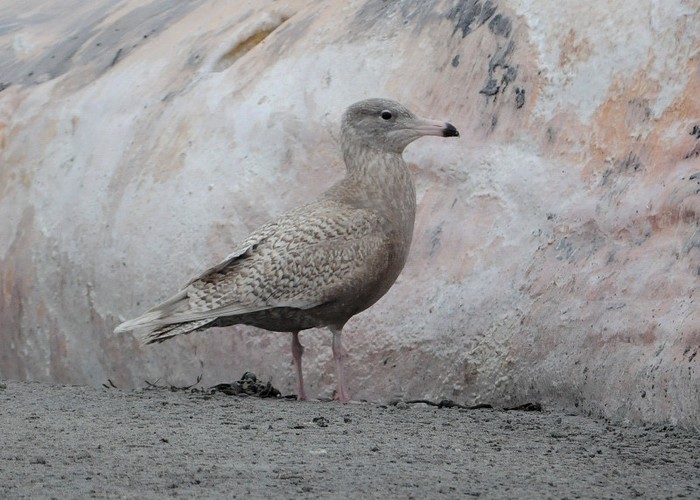
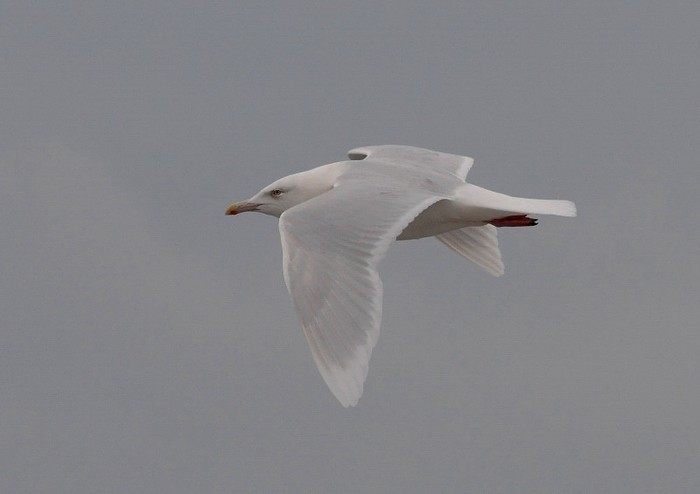
With approximately half as many Iceland Gulls recorded during the week, the chances are if it’s a white-winger you’re set to find, it’s more likely to be the former than the latter species this winter. Around 70 birds were recorded from 30 counties across Britain and Ireland in the period, with multiple birds including four at Killybegs (Co.Donegal) and 3 birds on the Richmond Bank (Cheshire) on January 29th; two birds apiece at Hoveringham (Nottinghamshire) and the Mullet (Co.Mayo) on 30th; and two birds at Sutton Courtenay (Oxfordshire) and five at Ballycotton (Co.Cork) on February 3rd.
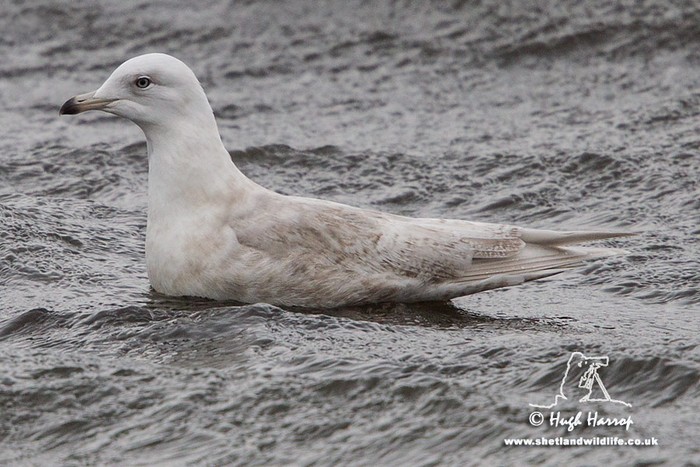
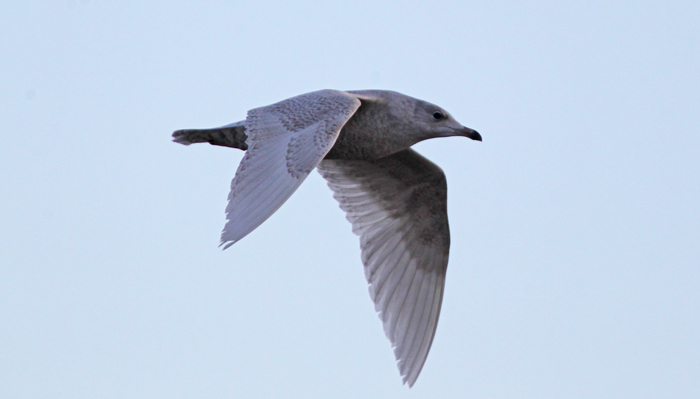
Numbers of Kumlien’s Gulls remained similar to last week’s tally with 27 birds recorded. The bulk of these, once again, were seen in Ireland – two adults at Killybegs (Co.Donegal) still on January 29th, with another bird that day at Blacksod (Co.Mayo); juveniles at Black Rock Strand (Co.Kerry) and the Mullet (Co.Mayo) on 30th; a possible adult at Ballycotton (Co.Cork) on February 1st; juveniles at Cruisetown Strand (Co.Louth), Carne (Co.Wexford) and Blennerville (Co.Kerry), adults at Poolbeg (Co.Dublin)and Helvick Head (Co.Waterford) on 2nd, and an adult at Kinsale Marsh (Co.Cork) on 4th.
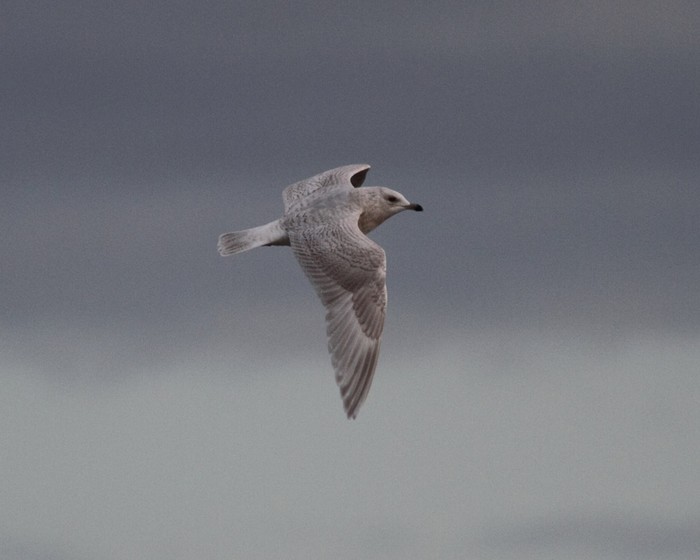
Scottish records involved two lingering juveniles at Scrabster (Highland) until January 31st; and single birds on the Outer Hebrides at Balranald, North Uist and Kildonan, South Uist on 29th. Wales accounted for an adult at Newgale (Pembrokeshire) still on February 4th, a juvenile at Blackpill (Glamorgan) on February 2nd; and three juveniles at Llys-y-Fran from 30th – 2nd. Finally, in England juveniles were at Westwood Pool (Worcestershire) still on 29th, and at Torr reservoir (Somerset) from 2nd-3rd; a third-winter at Rufforth (North Yorkshire) on 30th; an adult bird at Anglers CP (West Yorkshire) on 2nd; and adult birds at Broomhead reservoir and Shirecliffe Tip (South Yorkshire) on 4th.
In Norfolk, at least one Rough-legged Buzzard continued to be reported from Waveney Forest to February 4th; elsewhere in the county reports came from the Burnham Overy area between 29th and 2nd, from Martham Broad on 2nd, and from Admiralty Point on 4th. Essex accounted for a sighting at Holiwell Point on 3rd, while across the Thames estuary in Kent a further record came from Elmley on 31st.
In what’s proving to be a vintage year for wintering Hume’s Yellow-browed Warblers in England, all three birds remained on-site this week, at Coleshill (Warwickshire) until 4th; and in Kent at Dungeness Bird Observatory trapping area until 4th, and in Ramsgate cemetery until 2nd at least.
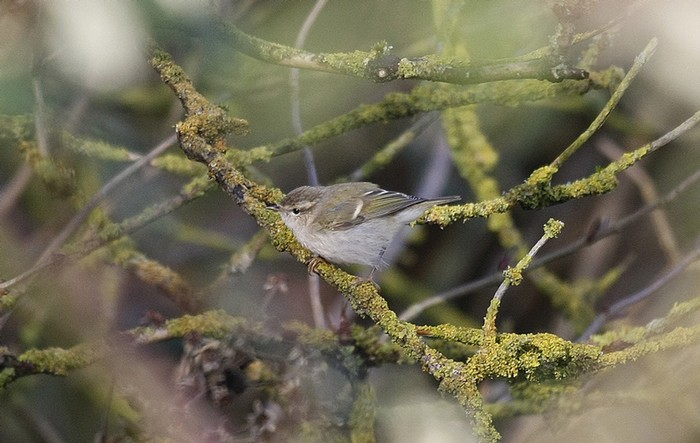
Elsewhere in Kent, the wintering Pallas’s Warbler remained in Folkestone until 2nd at least. At least eight Yellow-browed Warblers were reported with yet more new birds coming to light – a trapping session at Ponsanooth (Cornwall) yielded two birds on 29th; on the same date one was at Topsham (Devon), and the following day a particularly hardy bird was reported from Loch Flemington (Highland), providing with the American Coot there one of those pleasing east-meets-west moments.
Elsewhere, there were still at least two Yellow-browed Warblersat Torpoint (Cornwall) on 30th; and the single birds remained at Sutton Bingham Reservoir (Somerset) and Uffmoor Wood (Worcestershire) until 4th.
The wintering potential “Eastern” Lesser Whitethroat remained at the edge of Prior’s Park (Northumberland) through the week. It won’t be long before the results of that DNA test are due...
The popular Buff-bellied Pipit remained at Burton marsh (Chesire) until 30th, while in Norfolk the wintering Richard’s Pipit was recorded foraging at Gramborough Hill from February 1st-3rd.
On Scilly, the first-winter Rose-coloured Starling around the allotments on St. Mary’s remained throughout the week, as did the nearby first-winter male Serin.
19 Great Grey Shrikes were recorded in the course of the week, with the pair remaining at Great Rissington (Gloucestershire) until 3rd, maintaining the county’s tally of three birds in total for the week. Birds were recorded elsewhere from another 16 counties in total with the usual marked preference for the heathlands across the south of England. Welsh records came from Mynydd Ffoesidoes (Powys) on January 29th, World’s End (Clwyd) on 2nd, and from Llwyn-on reservoir (Glamorgan) on 4th.
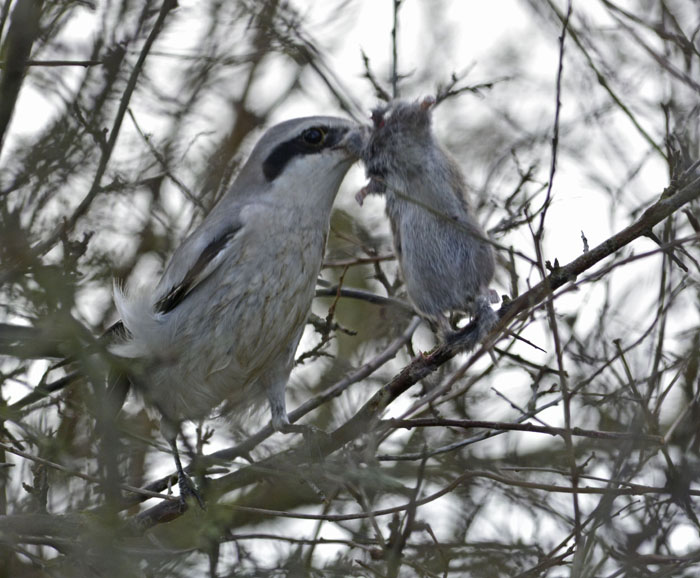
Once again, in a far from classic winter for the species (but hey, with what else has been on offer, who’s complaining...) the numbers of Waxwings reported this week were nothing to set the world afire. Around 120 were reported from across the country, with the only semi-sizeable flock being 45 birds at Hebburn (Co.Durham) on January 31st. Otherwise it was all single birds or mere handfuls. It looks like we’ll need to wait another year before we get an opportunity to enjoy the deafening mass-trilling of a really big flock.
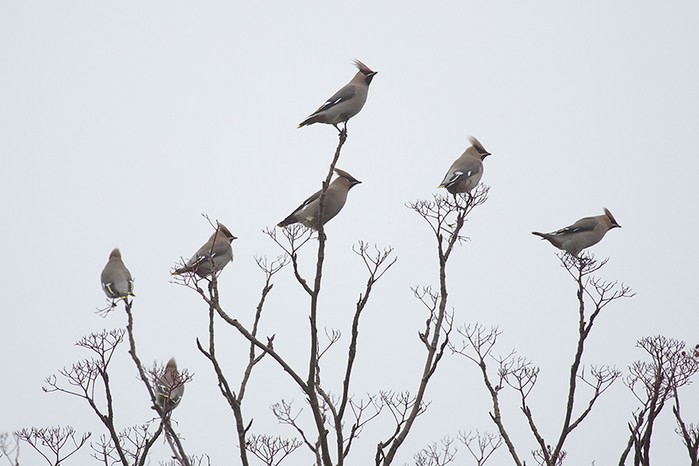
Despite any self-respecting Loxia having other things on its mind at this time of year, both Two-barred and Parrot Crossbills continued to be reported. Two-barred Crossbills were at the now-expected sites throughout the week, with three birds reported from the Wyre Forest at Postenplain (Shropshire); up to seven birds at Broomhead Reservoir (South Yorkshire) and up to seven birds also along the Serridge Ridge (Gloucestershire); and the lone male at Lynford Arboretum (Norfolk) until 1st at least. A final report surfaced during the week of another lone male in Norfolk in a private garden at Hoveton Hall throughout January – and this male was still present there on February 4th.
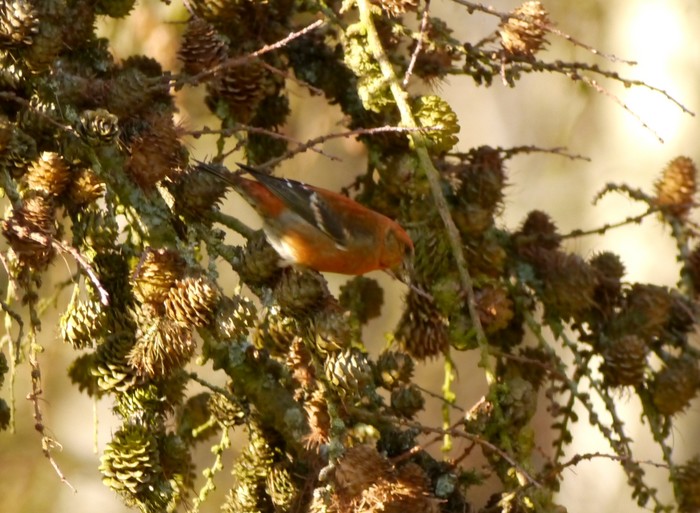
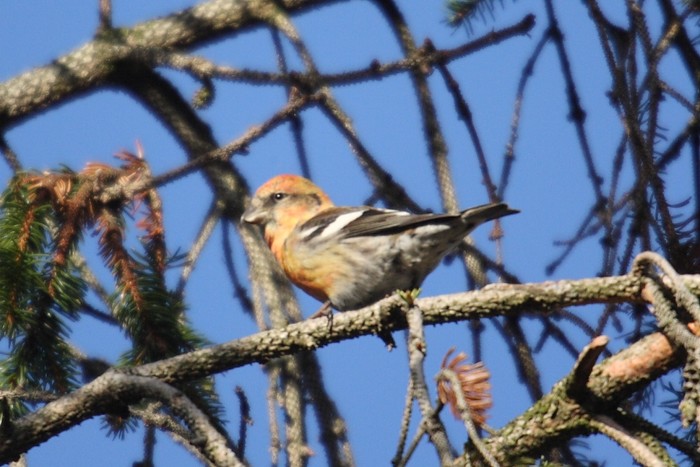
As for Parrot Crossbills it was very much a case of as-you-were, with the flock of 14 remaining constant at Budby Common (Nottinghamshire) until 2nd at least; and between seven and fourteen birds reported during the course of the week from Holt (Norfolk). The male cropped up again in Kent at Hemsted on 2nd, and a report of at least three possible birds came on January 30th from Thetford Forest (Suffolk).
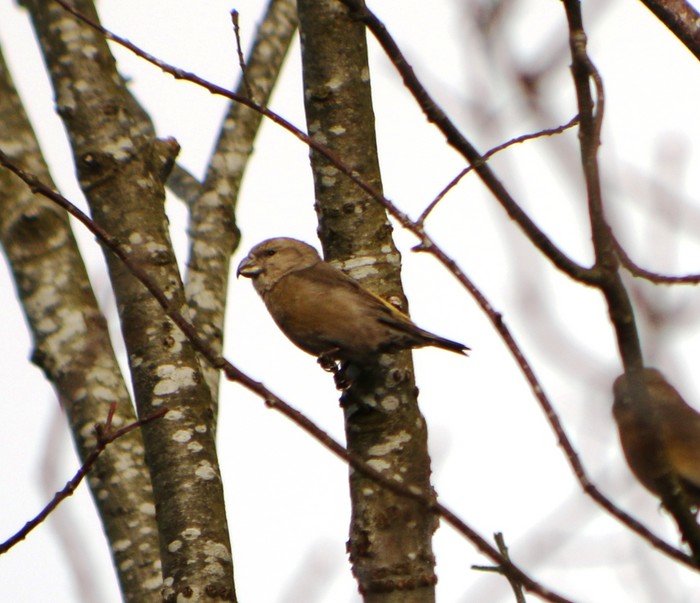
Time now for a gaze into the RBA crystal ball. I’ve already made my none-too-subtle request for an American Purple Gallinule (and I can’t help but notice the Allen’s Gallinule that cropped up (and duly turned its toes up) in Dorset on February 10th 2002 – is this some sort of gallinule-shaped omen?) but realistically, what’s likely to occur in the coming days?
After the superb showing so far this winter period, who’d bet against another Ivory Gull in the coming week? Statistically both that species and the ever-delightful Ross’s Gull stand out as likely contenders. Sticking to the northern-origin theme, so too do Gyr Falcon and
However, my wildcard this week is going to be a goose - Lesser White-fronted Goose to be precise. With 125 British and Irish records to date, it’s not numerically all that rare... but my gut instinct is that it’s got much harder to come by in recent years, and the stats bear that out – just one bird recorded in the past 10 years, a far cry from the halcyon days of the mid 1990s when they seemed to be a regular winter fixture and I spent many a happy hour flirting with mild hypothermia on the Isle of Sheppey while scoping distant goose flocks. With a steady influx of Bean Geese off the Continent in the past few days giving rise to hopes that geese are on the move into Britain, I think an unequivocal Lesser White-front would prove popular.
So that’s me finished for another week, and even as you read this I’ll be en route to Ecuador to flee the unrelenting British winter and bask in some South American birding, so it’s back to Mark to keep you abreast of next week’s happenings. Please God don’t let me miss anything too monster in the UK while I’m gone. It’s a safe time of year to be away, surely...
Jon Dunn
05 February 2014
Many thanks to this week's contributors for their photos and videos












